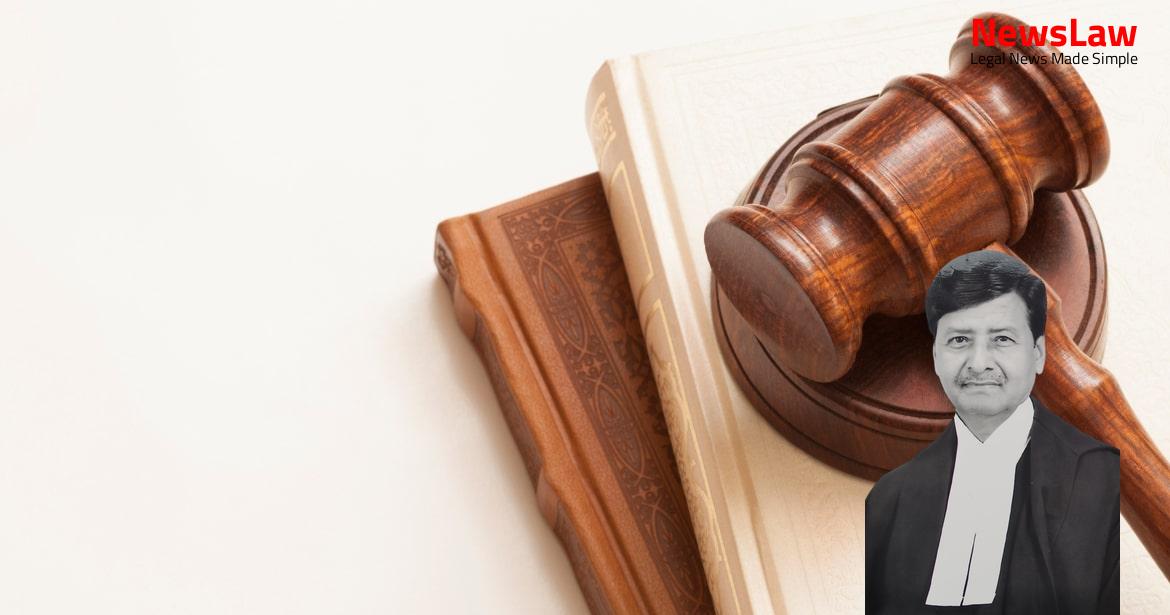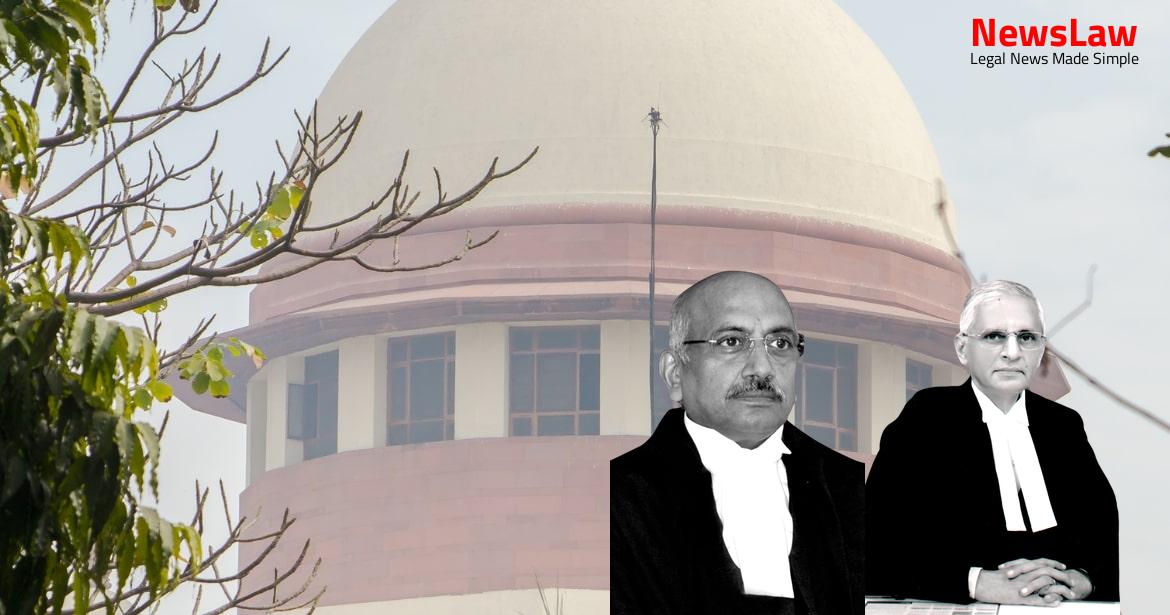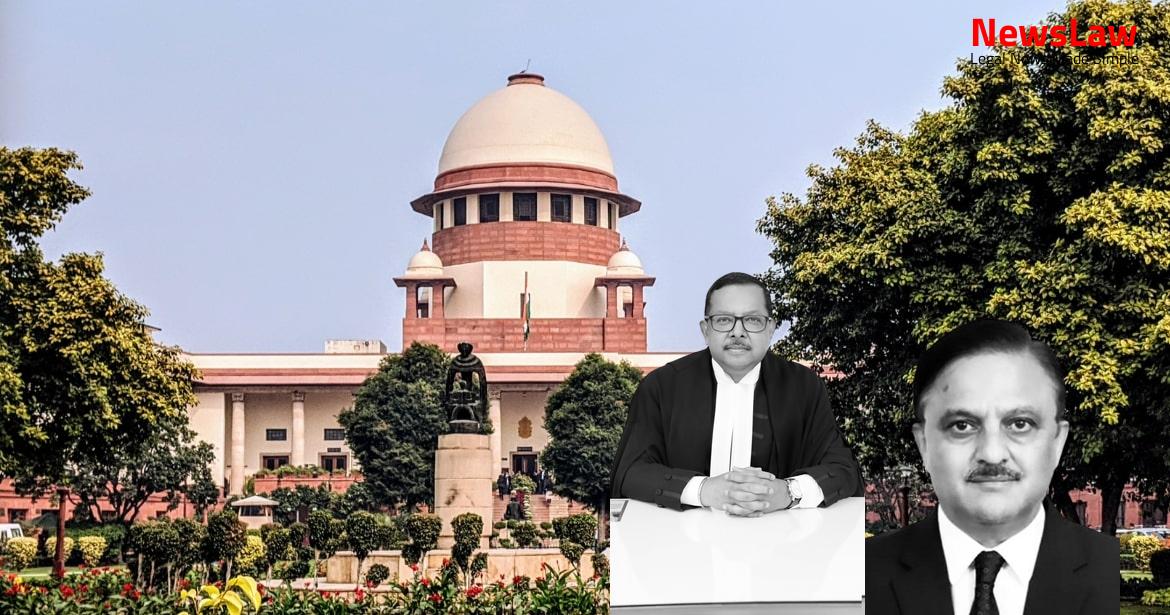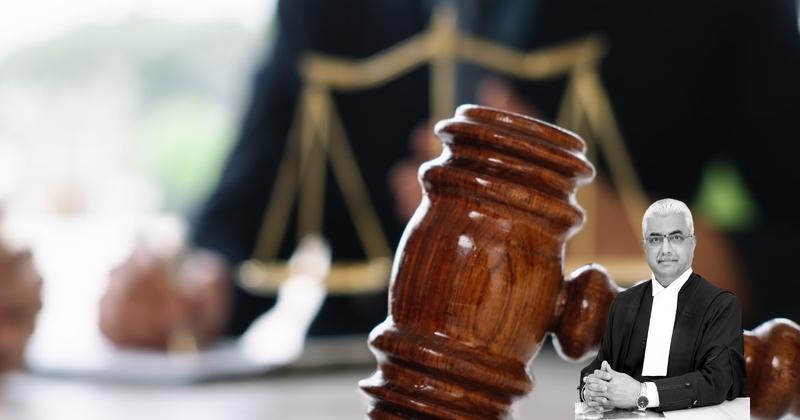In a landmark decision by the Supreme Court of India, the validity of the summoning order against the second respondent has been upheld. The case revolves around the tragic circumstances leading to the death of the deceased, with the second respondent being the primary focus of the legal proceedings. This ruling reinforces the principles of justice and ensures that the real culprit faces trial for their alleged involvement. Stay tuned for more insights on this impactful judicial outcome.
Facts
- The appellant deposed that she had given a plot with a house constructed thereon in Azad Nagar to her daughter and son-in-law in order to save their marriage.
- On receiving a phone call from the second respondent about her daughter’s death, the appellant, along with her husband and son, reached the house and found the body with visible injury marks.
- The appellant suspected murder as the cause of death and filed a complaint to higher officials, leading to exhumation of the body for post-mortem.
- The post-mortem report revealed advanced decomposition of the body, raising suspicions of foul play.
- An application under Section 319 of the CrPC was filed to summon the second respondent to face trial for the alleged complicity in the crime.
- Charges were framed against Manoj Shrivastav under Section 306 of the IPC, but the second respondent managed to get his name excluded from the charge sheet.
- During cross-examination, the appellant maintained that her daughter had mentioned ill-treatment by the second respondent and his family before her death.
- The appellant’s accounts of the events surrounding her daughter’s death remained consistent during examination and cross-examination.
- Despite suspicions of murder, the second respondent did not inform the police and conducted the deceased’s obsequial rites hastily.
- The order passed by the Additional Sessions Judge was considered valid and free from any flaws.
- The High Court’s decision to set aside the order based on the inadmissibility of the note written by the deceased was upheld by a two-judge Bench of this Court.
- Factors considered in the summoning order under Section 319 of the CrPC included: presence of the second respondent with the deceased during the incident, being alone with the body when the deceased’s parents arrived, the height disparity in hanging possibility, potential tampering with the scene, and refusal to undergo a Narcoanalysis test by the second respondent.
- The High Court upheld the summoning order, emphasizing the significance of evidentiary material as per the principles in the Hardeep Singh case.
- The Police investigation findings led to the setting aside of the High Court’s decision as statements under Section 161 of CrPC were deemed insufficient for invoking Section 319 by the Trial Court.
- The Additional Sessions Judge justified reliance on Section 114 of the Evidence Act due to the incident occurring in the matrimonial home with only the second respondent and the deceased present.
Arguments
- Mr Andleeb Naqvi, representing the appellant, argued that the Additional Sessions Judge correctly applied the legal test based on the Hardeep Singh case and evaluated the evidence of PW-1 according to Supreme Court principles.
- He emphasized that the evidence of PW-1 and PW-2, if not rebutted, could lead to the guilt of the proposed accused.
- Each circumstance noted by the Additional Sessions Judge for issuing summons under Section 319 was considered relevant material.
- It was argued that the High Court erred by interfering with the summoning order without displacing the observations of the Trial Court, through a Section 482 application.
- Mr Naqvi pointed out the absence of a protest petition from the appellant after the police investigation did not find grounds to prosecute the second respondent.
- He highlighted that under Section 319, the second respondent, once summoned, must be tried for the same offence as the co-accused alleged to have abetted the deceased’s suicide under Section 306.
- The necessity of strong and cogent evidence before the court to exercise power under Section 319 was underscored.
Also Read: CRPF Act: Validity of Rule 27 for Compulsory Retirement – Case of Head Constable vs. CRPF
Analysis
- Under Section 319, the court may proceed against a person for the offence they appear to have committed.
- The second respondent, the spouse of the deceased, was alone present when the deceased died in the house in unnatural circumstances.
- The second respondent did not inform the police about the unnatural death on the day of the incident or later.
- The second respondent hurriedly arranged for the burial of the deceased.
- The burden of proof under Section 106 of the Evidence Act to provide an explanation falls on the second respondent, who was the sole occupant of the house where the crime occurred.
- The discretion exercised by the Additional Sessions Judge to summon the second respondent aligns with Section 319 and previous court decisions
- The question at hand is whether the Trial Court was correct in summoning the second respondent based on the evidence from PW-1 and PW-2
- PW-2 provided photographs showing marks of injury on the deceased’s body during the investigation
- The High Court erred in setting aside the summoning order by the Trial Court, despite cogent reasons provided by the Additional Sessions Judge
- The interference by the High Court was based on a misunderstanding regarding the nature of the trial against Manoj Shrivastav under Section 306
- Section 319 empowers the court to proceed against individuals appearing guilty of an offense during an ongoing inquiry or trial
- The court has the power under Section 319 even if the stage for filing a protest petition has passed.
- The duty of the court is to ensure justice by punishing the real culprit.
- The satisfaction of the court is required before exercising the power under Section 319.
- Prior decisions have applied principles from previous cases like Hardeep Singh in various situations.
- In different cases like Babubhai Bhimabhai Bokhiria v State of Gujarat and Rajesh v State of Haryana, the courts summoned individuals based on evidence and statements.
- The High Court has the power to review and test the validity of orders passed by lower courts.
- The Constitution Bench’s decision in Hardeep Singh provides the guidelines for utilizing the jurisdiction under Section 319 of CrPC.
- The absence of a protest petition by the appellant when the report was submitted under Section 173 did not prevent the court from using its powers under Section 319 based on emerging evidence during the trial.
- Evidence from PW-1 and PW-2 met the required threshold for issuing a summons under Section 319.
- The High Court did not properly analyze the basis for the Additional Sessions Judge’s decision to issue summons under Section 319.
- The High Court’s brief and insufficient observations during its jurisdiction under Section 482 were deemed unsustainable, requiring the order to be set aside.
Also Read: DAMEPL vs. DMRC: Curative Petition and Arbitral Award Restoration
Decision
- Appeal allowed and impugned judgment set aside
- Order of the Additional District and Sessions Judge upheld
- Summons issued to the second respondent under Section 319 of the CrPC upheld
- Pending application(s) to be disposed of
Case Title: SAEEDA KHATOON ARSHI Vs. THE STATE OF UTTAR PRADESH
Case Number: Crl.A. No.-001815-001815 / 2019



